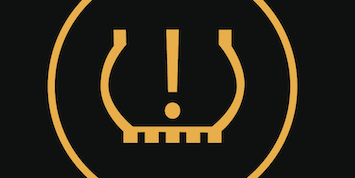This tech tip applies to Nissan vehicles like the Maxima, Altima and most other models with a Tire Pressure Monitor System (TPMS) or Low Tire Pressure Warning System (LTPWS). If the TPMS/LTPWS warning light is illuminated (continuously or flashing), the TPMS/LTPWS system can be diagnosed by turning the ignition to the “OFF” and then to the “ON” position. If the TPMS/LTPWS warning light is continuously illuminated (not flashing), the TPMS/LTPWS is operating normally and has detected low tire pressure in one of the tires.
1. Leave the ignition in the “ON” position and set the tire pressure to the recommended pressure shown on the vehicle’s tire pressure placard.
2. Leaving the ignition in the ON position may allow the TPMS/LTPWS to detect the corrected tire pressure more quickly on 2009 and newer models without a test drive. Some 2011 and newer models will display an alert in the vehicle information display near the speedometer. The alert will read “Check Tire Pressure,” or similar.
3. If the TPMS/LTPWS warning light is flashing for approximately one minute, there is a TPMS/LTPWS system malfunction. Check the DTC and refer to the service information or your TPMS tool.
NOTE: TPMS/LTPWS wheel sensors must be registered each time the wheels are rotated, swapped or replaced so that the sensors operate correctly and send the correct tire pressure from the new wheel location.














